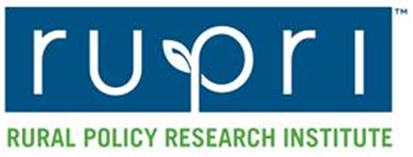- CMS: Medicare and Medicaid Programs: CY 2026 Payment Policies Under the Physician Fee Schedule and Other Changes to Part B Payment and Coverage Policies; Medicare Shared Savings Program Requirements; and Medicare Prescription Drug Inflation Rebate Program
- Public Inspection: CMS: Medicare and Medicaid Programs: CY 2026 Payment Policies under the Physician Fee Schedule and Other Changes to Part B Payment and Coverage Policies; Medicare Shared Savings Program Requirements; and Medicare Prescription Drug Inflation Rebate Program
- CMS: Medicare Program; Implementation of Prior Authorization for Select Services for the Wasteful and Inappropriate Services Reduction (WISeR) Model
- Public Inspection: CMS: Medicare Program: Implementation of Prior Authorization for Select Services for the Wasteful and Inappropriate Services Reduction Model
- CMS: Secretarial Comments on the CBE's (Battelle Memorial Institute) 2024 Activities: Report to Congress and the Secretary of the Department of Health and Human Services
- HHS: Patient Protection and Affordable Care Act: Marketplace Integrity and Affordability
- Public Inspection: HHS: Patient Protection and Affordable Care Act: Marketplace Integrity and Affordability
- Increased Risk of Cyber Threats Against Healthcare and Public Health Sector
- HRSA Announces Action to Lower Out-of-Pocket Costs for Life-Saving Medications at Health Centers Nationwide
- Announcing the 2030 Census Disclosure Avoidance Research Program
- Eight Hospitals Selected for First Cohort of Rural Hospital Stabilization Program
- CMS: Medicare Program; Hospital Inpatient Prospective Payment Systems for Acute Care Hospitals and the Long-Term Care Hospital Prospective Payment System and Policy Changes and Fiscal Year 2026 Rates; Requirements for Quality Programs; and Other Policy Changes; Correction
- CMS: Medicare Program; Hospital Inpatient Prospective Payment Systems for Acute Care Hospitals and the Long-Term Care Hospital Prospective Payment System and Policy Changes and Fiscal Year 2026 Rates; Requirements for Quality Programs; and Other Policy Changes; Correction
- CMS: Medicare and Medicaid Programs; Contract Year 2026 Policy and Technical Changes to the Medicare Advantage Program, Medicare Prescription Drug Benefit Program, Medicare Cost Plan Program, and Programs of All-Inclusive Care for the Elderly; Correction
- CMS: Medicare and Medicaid Programs; Contract Year 2026 Policy and Technical Changes to the Medicare Advantage Program, Medicare Prescription Drug Benefit Program, Medicare Cost Plan Program, and Programs of All-Inclusive Care for the Elderly; Correction
New Report: Nonmetropolitan Premiums, Issuer Participation, and Enrollment in Health Insurance Marketplaces in 2022

This new policy brief describes differences in unsubsidized and net-of-subsidy premiums between nonmetropolitan and metropolitan counties in plan design and availability in 2022. Consistent with previous reports of health insurance marketplace (HIM) activity, we report enrollment-weighted plan selection by metal level and premiums paid by number of issuers and by Medicaid expansion status.
Authors: Abigail Barker, PhD; Ayushi Shrivastava, MPH; Eliot Jost, MBA, MPH; Timothy McBride, PhD; Keith Mueller, PhD
Read the full report.
The Commercial Alternative to Traditional Medicare Is Putting Financial Strain on Rural Hospitals

For more than a dozen years, leaders in the rural health care field have issued strong warnings: Rural hospitals are struggling financially.
Despite public attention and some changes in federal policies, difficulties continue. A new report from a private healthcare consulting company has found that nearly 20% of all rural hospitals are at risk of closing.
The report, issued annually by the Chartis Center for Rural Health, said the percentage of rural hospitals operating in the red jumped to 50%, up from 43% last year. Of the independent rural hospitals across the country, 55% were operating in the red. More than 60% of rural hospitals are affiliated with larger health-systems. Of those, 42% were operating in the red.
All told, Chartis identified 418 of the 2,115 of the rural hospitals as “vulnerable to closure.” Since 2020, 35 rural hospitals have closed, including nine last year. Nearly 200 rural hospitals have closed since 2005.
“I think we’re in a much, much worse situation,” Michael Topchik, national leader for the Chartis Center for Rural Health said in an interview with the Daily Yonder. “I mean, more than 15 years ago, I remember sharing some of these statistics… and there was a little bit of ‘Chicken Little’ in the air with a third of rural hospitals operating in the red… Now, to see half of rural hospitals operating in the red… in the absence of something being done, things have just gotten more challenging.”
Those increased challenges include changes to Medicare and Medicaid reimbursement rates, changes to how hospitals are categorized, and what services hospitals are able to provide, among other things.
Operating in the Red: Half of Rural Hospitals Lose Money, as Many Cut Services

In a little more than two years as CEO of a small hospital in Wyoming, Dave Ryerse has witnessed firsthand the worsening financial problems eroding rural hospitals nationwide.
In 2022, Ryerse’s South Lincoln Medical Center was forced to shutter its operating room because it didn’t have the staff to run it 24 hours a day. Soon after, the obstetrics unit closed.
Ryerse said the publicly owned facility’s revenue from providing care has fallen short of operating expenses for at least the past eight years, driving tough decisions to cut services in hopes of keeping the facility open in Kemmerer, a town of about 2,400 in southwestern Wyoming.
South Lincoln’s financial woes aren’t unique, and the risk of hospital closures is an immediate threat to many small communities. “Those cities dry out,” Ryerse said. “There’s a huge sense of urgency to make sure that we can maintain and really eventually thrive in this area.”
A recently released report from the health analytics and consulting firm Chartis paints a clear picture of the grim reality Ryerse and other small-hospital managers face. In its financial analysis, the firm concluded that half of rural hospitals lost money in the past year, up from 43% the previous year. It also identified 418 rural hospitals across the U.S. that are “vulnerable to closure.”
Mark Holmes, director of the Cecil G. Sheps Center for Health Services Research at the University of North Carolina, said the report’s findings weren’t a surprise, since the financial nosedive it depicted has been a concern of researchers and rural health advocates for decades.
The report noted that small-town hospitals in states that expanded Medicaid eligibility have fared better financially than those in states that didn’t.
Leaders in Montana, whose population is nearly half rural, credit Medicaid expansion as the reason their hospitals have largely avoided the financial crisis depicted by the report despite escalating costs, workforce shortages, and growing administrative burden.
“Montana’s expansion of Medicaid coverage to low-income adults nearly 10 years ago has cut in half the percentage of Montanans without insurance, increased access to care and preserved services in rural communities, and reduced the burden of uncompensated care shouldered by hospitals by nearly 50%,” said Katy Mack, vice president of communications for the Montana Hospital Association.
Not one hospital has closed in the state since 2015, she added.
Hospitals elsewhere haven’t fared so well.
Geisinger Names New President, Next CEO
From Becker’s Healthcare
Danville, Pa.-based Geisinger appointed Terry Gilliland, MD, as the next president and CEO of Geisinger Health.
Dr. Gilliland will succeed Jaewon Ryu, MD, JD, after he transitions to CEO of Risant Health, a nonprofit organization created by Kaiser Foundation Hospitals. Oakland, Calf.-based Kaiser Permanente agreed to acquire Geisinger last year as the first health system to join Risant, and the deal is waiting on regulatory approval.
Geisinger’s board conducted an extensive search for Dr. Ryu’s successor.
“The role of leading Geisinger is unique,” said Heather Acker, chair of the Geisinger board of directors, in a news release. “It requires passion for our mission–to make better health easier for our patients and members across Pennsylvania; a drive to innovate care delivery; and a commitment to educating future caregivers. We are confident that Dr. Gilliland is the right person to lead Geisinger on our path forward.”
In his new role as the eighth leader of Geisinger, Dr. Gilliland will oversee the system’s 25,000 employees, who serve more than 1 million people annually. The 10-hospital system also includes a health plan with more than 500,000 members, a research institute and Geisinger College of Health Sciences. Geisinger has more than 1,700 employed physicians.
Dr. Gilliland has previous experience as chief medical officer and chief science officer of Cogitativo, an artificial intelligence and machine learning company focused on healthcare. He was also executive vice president of healthcare quality and affordability for Blue Shield of California and senior vice president and chief medical officer of Norfolk, VA.-based Sentara Healthcare.
Dr. Gilliland also spent time in leadership roles at Mid-Atlantic Permanente Medical Group and Colorado Permanente Medical Group early in his career.
New Resource Published: How Health Professionals Can Work With Head Start
This handout series offers tips on what dentists, dental hygienists, and medical professionals can do to improve the oral health needs of children and pregnant women and people enrolled in Head Start programs. It highlights the importance of oral health for school readiness and describes the oral health services offered by Head Start programs.
Updated Catalog of Value-Based Initiatives for Rural Providers Released

The Rural Health Value team is pleased to announce the release of an updated version of the Catalog of Value-Based Initiatives for Rural Providers. The catalog summarizes rural-relevant, value-based programs currently or recently implemented by the Department of Health and Human Services (HHS), primarily by the Centers for Medicare & Medicaid Services (CMS) and its Center for Medicare & Medicaid Innovation (CMMI). Its purpose is to help rural leaders and communities identify HHS value-based programs appropriate for rural participation.
Related resources on the Rural Health Value website:
- RHV’s “Get Ahead of AHEAD in rural!” webinar recording & handout. This webinar discussed the States Advancing All-Payer Health Equity Approaches and Development (AHEAD) model. The webinar was designed to help rural health leaders (including state agencies such as Medicaid and public health) interested in the AHEAD model identify opportunities and next steps. Find the CMS website for AHEAD here States Advancing All-Payer Health Equity Approaches and Development (AHEAD) Model | CMS
- 2023 Uniform Data Set (UDS) Measure Crosswalk to Other Quality Reporting Programs This crosswalk highlights alignment between Uniform Data Set (UDS) measures and other quality reporting programs. Intended to help health centers identify which UDS measures are being utilized by other programs such as CMS Accountable Care Organizations (ACOs), and the CMS Quality Payment Program (QPP).
Medicare Shared Savings Program: Rule Changes and Implications for Rural Health Care Organizations
This summary is of changes made to the Medicare Shared Savings Program taking effect in 2023 and 2024. This Rural Health Value analysis outlines how the changes may reduce barriers to participation for potential or reentering ACOs that operate in rural contexts.
CDC Million Hearts® 2024 Hypertension Control Challenge is Now Open!

Did you know… rural Americans are at greater risk for premature death from five leading causes, including heart disease?
Call for Applications: Million Hearts® 2024 Hypertension Control Challenge
Million Hearts® is a national initiative to prevent 1 million heart attacks and strokes within 5 years. It focuses on implementing a small set of evidence-based priorities and targets that can improve cardiovascular health for all.
If you’re a rural healthcare professional, or represent a rural practice or health system with hypertension control rates of 80% or better, please consider applying for the “Challenge.” Moreover, colleagues with the Million Hearts program would welcome an opportunity to spotlight the success of a 2024 Hypertension Control Champion serving a rural community, as would we!
The Million Hearts® 2024 Hypertension Control Challenge recognizes and celebrates health care professionals, practices, and health systems that have achieved exceptional hypertension control rates of at least 80%. Practices and clinicians in the U.S. and its territories are eligible for possible recognition as a Champion. The submission deadline is April 5, 2024.
